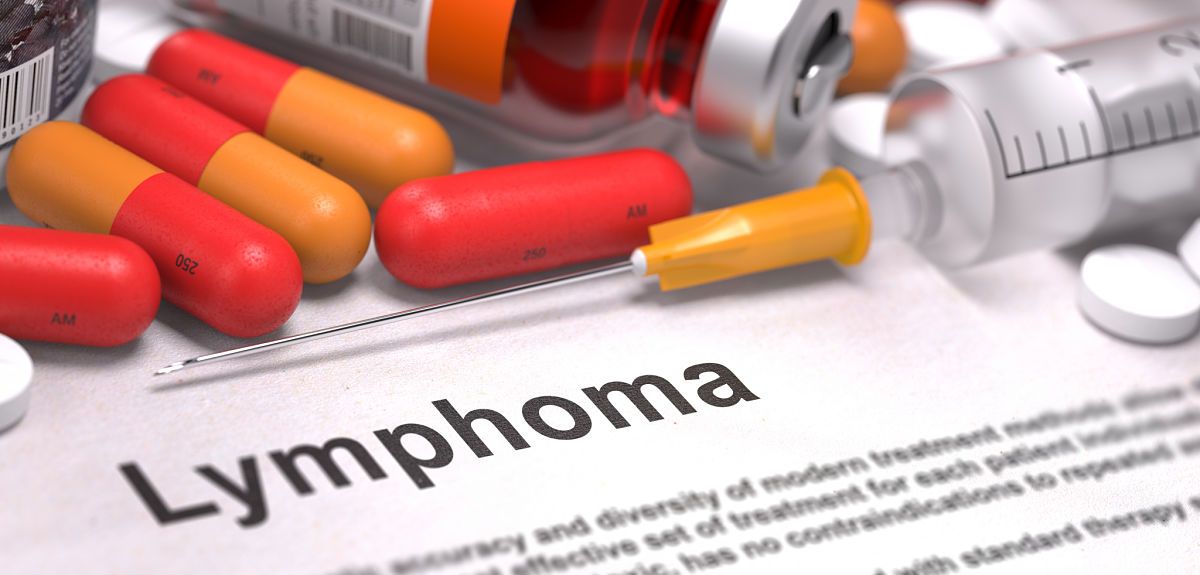
Image credit: Tashatuvango/ Shutterstock
Scientists find possible genetic key to why some lymphoma patients don’t respond to treatment
An important regulator that controls the ability of tumour cells to hide from the immune system in lymphoma patients, making them unlikely to respond to standard treatment, has been discovered by scientists at the University of Oxford.
Researchers funded by the blood cancer charity Bloodwise analysed tumour samples from individual patients with diffuse large B-cell lymphoma (DLBCL), alongside cell line models and data on treatment response and survival.
DLBCL, an aggressive cancer affecting white blood cells, is diagnosed in around 5,000 people each year in the UK. There are several different subtypes of the disease, each of which differs in its response to chemotherapy.
The Oxford team found that high levels of shortened forms of a protein, known as FOXP1, in a patient’s lymphoma cells enable the cancer to evade the immune system, potentially nearly halving survival rates for these patients. The findings are published in the journal Leukemia.
The shortened form of the FOXP1 protein was shown to block molecular ‘red flags’ on the surface of lymphoma cells, that would normally present tumour markers to immune cells in the blood – thus blocking the body’s natural defence against cancer.
We can design drugs to switch off the FOXP1 gene in lymphoma cells and help patients’ immune systems to fight their tumour.
Professor Alison Banham, Radcliffe Department of Medicine
An aggressive subtype of diffuse large B-cell lymphoma that affects around a half of all patients is known to have abundant shorter forms of the FOXP1 protein. There are a number of drugs currently being developed for this disease subtype, and these findings could add crucial information.
Professor Alison Banham, from the University of Oxford, said: “Scientists have been trying to understand the mechanism of this loss of immune system recognition for over a decade. Now we know that the FOXP1 protein has such an impact on how this type of lymphoma progresses, we can design drugs to switch off the FOXP1 gene in lymphoma cells and help patients’ immune systems to fight their tumour.”
When the scientists prevented the FOXP1gene from functioning in the laboratory, they found that levels of a group of proteins involved in cell interaction with the immune system were raised. Levels of one particular protein in this group, HLA-DRA (a major histocompatibility class II protein), rose significantly as levels of FOXP1 dropped in tumour cells.
The researchers then analysed the tumour profiles of 150 patients with DLBCL who had undergone standard treatment – a combination of chemotherapy and antibody drugs. While 72% of patients with high levels of the HLA-DRA protein survived for over five years after diagnosis, just 38% of patients with lower levels of the protein in their lymphoma cells survived that long. Scientists believe that blocking FOXP1can elevate HLA-DRA, which in turn helps the immune system to keep the lymphoma at bay.
Dr Matt Kaiser, Head of Research at Bloodwise, said: “Understanding how the FOXP1 protein enables tumour cells to hide from the immune system could be a significant step in improving outcomes for hard-to-treat cases. Diffuse large B-cell lymphoma is the most common type of blood cancer and is responsible for a considerable loss of life each year in the UK. Whilst there’s still a lot of work to do here, using knowledge of an individual’s biology to tailor the treatment plan should ultimately bring significant benefits to patients, both in survival and quality of life.”
FOXP1belongs to a group of proteins known as ‘transcription factors’, which control healthy cell development by switching genes on and off. As transcription factors regulate a vast array of different cell processes, any alteration to their function within tumour cells can have radical effects on a cancer’s behaviour. In breast cancer and other diseases the normal form of FOXP1 is thought to actually suppress tumour growth.
The paper, FOXP1 suppresses immune response signatures and MHC class II expression in activated B-cell-like diffuse large B-cell lymphomas, is published online in the journal Leukemia: doi: 10.1038/leu.2015.299
 New study finds that ChatGPT amplifies global inequalities
New study finds that ChatGPT amplifies global inequalities
 Expert Comment: Chatbot-driven sexual abuse? The Grok case is just the tip of the iceberg
Expert Comment: Chatbot-driven sexual abuse? The Grok case is just the tip of the iceberg